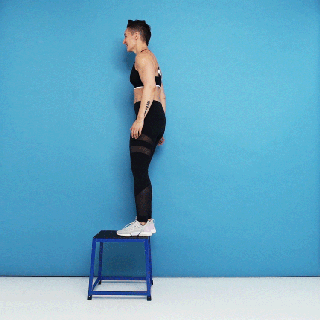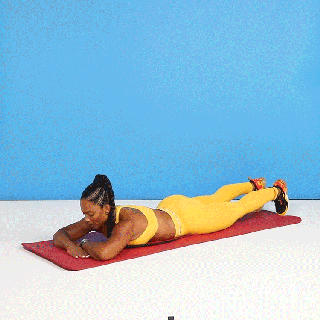9 Exercises for Knee Pain to Help You Move (and Feel!) Better
Knee pain is one of those annoying facts of life, affecting about 25% of adults. But you don’t have to just put up with it: Incorporating exercises for knee pain—both strength moves and stretches—can help ease your aches.
Yes, it may sound like a counterintuitive. If your knee hurts when you use it, shouldn’t you rest it? While that makes sense on a surface level—and may be true in the event of an acute injury—it’s often not the best solution. Instead, carving out time for a targeted strength and stretching routine can reduce stress placed on the knee joint, ultimately helping you move free and easy.
So how can exercises help with knee pain anyway?
First, a quick anatomy lesson: Your quads, hamstrings, and calves attach to the knee, Emily Cutler, PT, DPT, a physical therapist at Hospital for Special Surgery, tells SELF. And your glutes and hip abductors (a group of side-butt muscles that work to bring your leg out to the side) help stabilize your knee joint and keep your lower limbs in alignment when you walk and run, she explains. When any of these muscle groups are weak and not doing their job, the knee can end up taking on more stress than it’s designed to. And that’s how knee pain can creep in. By doing certain resistance exercises, you can strengthen these muscles, which can improve the stability of the knee joint, enhance its ability to absorb shock, and reduce the overall stress placed on it, Dr. Cutler explains.
Of course, you’ll want to pick strength moves that don’t aggravate your pain, which is why many of the moves listed below—like the wall sit, glute bridge, and side plank, for example—don’t involve a ton of active bending and straightening of the knee, since that motion can aggravate some knee issues. You can also modify exercises to be more knee-friendly. For example, instead of doing traditional squats where you sink down to 90 degrees, you can do mini-squats where you go just partway down. By shortening your range of motion, you can avoid a pain flare up while still reaping the strength benefits.
Stretching can also come in clutch for mitigating knee pain. “Stretching complements strengthening,” Dr. Cutler says. That’s because if the muscles that attach to the knee are too stiff or tight, they can abnormally pull on the joint and cause increased stress, which could lead to pain, she explains. By taking the time to lengthen them through targeted stretching, you can improve your flexibility and range of motion, correct abnormal joint tracking, and reduce overall feelings of stiffness and pain, Dr. Cutler says.
How to incorporate exercises for knee pain into your routine
Below, we have specific strength exercises (moves 1-6) and stretches (moves 7-9) from Dr. Cutler and Kelly Lay, PT, DPT, a Maryland-based physical therapist with FX Physical Therapy, that can help with knee pain. First though, some advice on weaving them into your routine.
Dr. Cutler suggests making a mini workout out of the below moves. Start with a gentle five to 10-minute warm-up to get your blood flowing—light cardio activities like walking or cycling would do the trick. Then, do your strength exercises: Pick three to four from the below, choosing one to two moves per muscle group (quads, hamstrings, and glutes). Complete each exercise for two to three sets of 10 to 15 reps. Next, do your stretches, which can serve as a cooldown: Hold each one for 30 seconds and repeat for three total rounds. Complete this routine, which should take about 30 minutes, three to five times a week.
These exercises should feel comfortable and not cause you any pain, Dr. Lay tells SELF. So if you notice something feels off as you do them, take a moment to check in on your form. It may be that you need to use less weight or resistance, or be extra mindful of your positioning to ensure you’re doing it correctly. But if neither of those issues are at play, the exercise or stretch may just not be for you. And that’s okay! Try out some of the other moves on the list to see what does work for you.
Important note: These exercises and stretches aren’t appropriate for all types of knee pain. If your discomfort is so intense you’re having trouble walking; if your joint locks or clicks; if your knee pain is accompanied by swelling, redness, or warmth; or if the pain happened as a result of acute trauma (for example: you twisted it while playing pickleball, or it started throbbing after you tripped and fell on a run), then you should check in with a doctor or physical therapist before trying these moves, Dr. Cutler says. Same goes if your knee frequently feels like it’s giving out, Dr. Lay adds.
You should also check in with a physical therapist or doctor if your knee pain gets worse with exercise, or if you haven’t noticed any improvement with it after three to four weeks of consistently doing these exercises and stretches, Dr. Cutler says.
.png?format=original)

.jpg)





